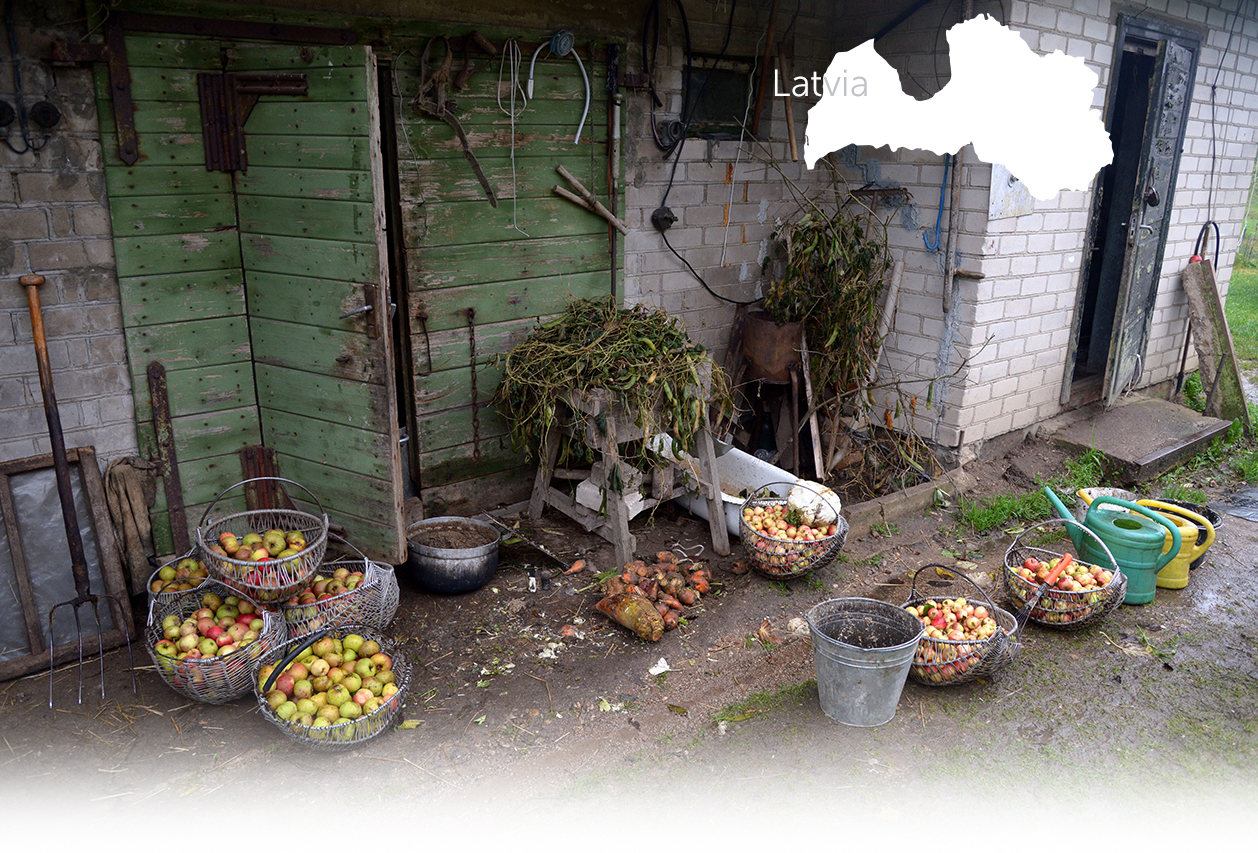

1 Killing site(s)
Ilonija S., born in 1926: "One warm day during the German occupation, I remember seeing a large police vehicle parked near the home of the local shoemaker, whose family name was Martisons. The police were stopping and checking everyone who passed by. They also stopped a friend of mine who had a crooked nose. When they asked whether she was Jewish, she gave them her Latvian surname, and they allowed her to continue on her way. The policemen were saying that the Jews were going to be taken away. They did not say where, but they mentioned shootings." (Testimony N°YIU42LV, interviewed in Vaiņode, on October 1, 2019)
Vaiņode is situated approximately 60 km (37.2 mi) southeast of Liepāja. The township was formed in 1925 through the merger of the settlements Vaiņode and Bata. Thanks to its healthy climate, Vaiņode developed into a resort and sanatorium center for patients with lung diseases. Growing housing needs also contributed to the expansion of local woodworking and brick production.
The 1935 census recorded 125 Jewish residents in Vaiņode, making up nearly 9% of the population. Most members of the community worked in trade or crafts, running shops that sold textiles, ready-made clothing, dry goods, footwear, leather goods, and other similar items. The town also had a two-storey Jewish prayer house, built in 1929—later converted into a Catholic church after the war—and a Jewish school that operated for some time. In addition, the Linat Hatzedek society from Liepāja owned two local plots where, by 1938, both its sanatorium and the Weinberg boarding house were already in operation.
The exact number of Jews who remained in Vaiņode on the eve of the German invasion remains unknown, but according to local witnesses interviewed by Yahad, there were still numerous Jewish families living in the town.
Vaiņode was occupied by German troops in late June or early July 1941. In contrast to many nearby Liepāja-area settlements, the mass killing of Vaiņode’s Jews took place later, on November 1, 1941.
The Jews from Vaiņode and the surrounding communities of Nīgrande, Vērgale, and Priekule were arrested in late October 1941 by the German gendarmerie and police forces, assisted by the local Aizsargi unit. Two local residents interviewed by Yahad, Ilonija S. (born 1926) and Mirdza Z. (born 1930), recalled that the perpetrators took the Jewish inhabitants from their homes.
The victims were transported in trucks to the military base near the airfield of the Vaiņode airport, which had previously housed a Red Army garrison. According to sources, the approximately 130 victims were confined on the second floor of one of the military base buildings. However, the memorial plaque on the synagogue building in Vaiņode states that the Jews were held there before being murdered.
On the morning of November 1, 1941, the victims were taken to the killing site located behind the Vaiņode airport airfield, where they were forced to undress and were shot in groups of ten into a pit that had been dug in advance. The Aktion was carried out by eight Germans and a Latvian SD squad from Liepāja, assisted by locals who guarded the route to the killing site.
After the destruction of Vaiņode’s Jewish population, the Jewish houses and shops, as well as the victims’ belongings left in the military base building, were looted. According to Mirdza Z., “The garrison’s doors were all open. People went in and took whatever they wanted.”
Most of the Jews who managed to hide or escape during the shooting were eventually found and killed.
The victims’ remains were later exhumed from the initial killing site during the German occupation and reburied in a nearby forest about 150 meters away, although the exact location of this reburial site has not been identified.
In November 2001, the Vaiņode local government installed a wooden memorial near the Vaiņode airfield, marked with a Star of David and the Latvian inscription “1.11.1941. Holocaust.” In 2006, a red granite memorial stone was erected at the killing site, bearing two Stars of David and an inscription in Latvian: “At this location on 1 November 1941, the fascists murdered 130 Jews from the parishes of Vaiņode, Nīgrande, and Vērgale.”
Do you have additional information regarding a village that you would like to share with Yahad ?
Please contact us at contact@yahadinunum.org
or by calling Yahad – In Unum at +33 (0) 1 53 20 13 17